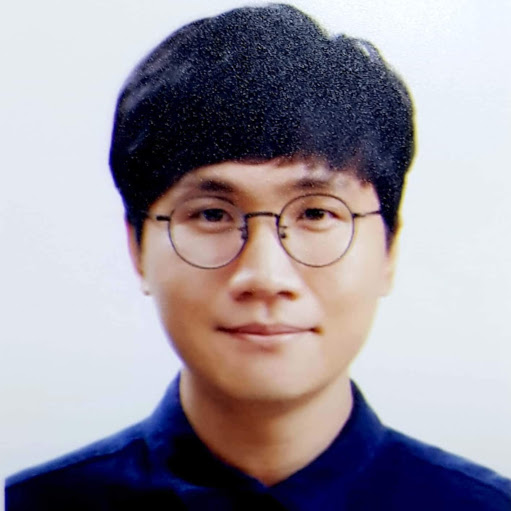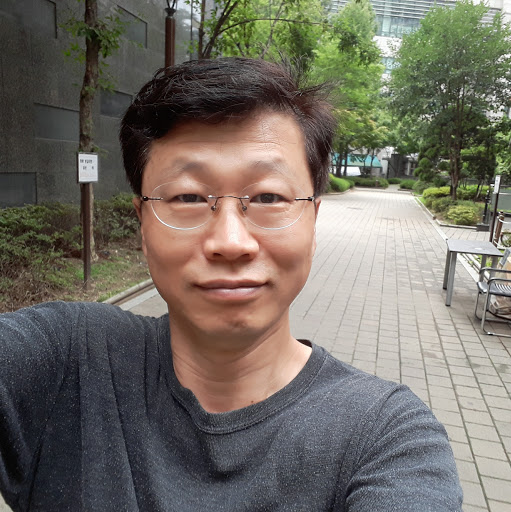Sang H Yoo
age ~54
from Lorton, VA
- Also known as:
-
- Sang Hyo Yoo
- Sang H Yod
- Yue Lang
Sang Yoo Phones & Addresses
- Lorton, VA
- 401 Joshua Ct, North Wales, PA 19454 • 2155420935
- Monterey, CA
- Columbia, MD
- Newport News, VA
- Northville, MI
- Honolulu, HI
- Horsham, PA
Medicine Doctors

Sang W. Yoo
view sourceSpecialties:
Psychiatry
Work:
Sang W Yoo MD
245 Hillside Ave STE 3, Nutley, NJ 07110
9736678800 (phone), 9732841100 (fax)
245 Hillside Ave STE 3, Nutley, NJ 07110
9736678800 (phone), 9732841100 (fax)
Education:
Medical School
Korea Univ Coll of Med, Chong No Ku, Seoul, So Korea
Graduated: 1971
Korea Univ Coll of Med, Chong No Ku, Seoul, So Korea
Graduated: 1971
Procedures:
Psychiatric Diagnosis or Evaluation
Psychiatric Therapeutic Procedures
Psychiatric Therapeutic Procedures
Conditions:
Bipolar Disorder
Dementia
Schizophrenia
Anxiety Dissociative and Somatoform Disorders
Anxiety Phobic Disorders
Dementia
Schizophrenia
Anxiety Dissociative and Somatoform Disorders
Anxiety Phobic Disorders
Languages:
Chinese
English
English
Description:
Dr. Yoo graduated from the Korea Univ Coll of Med, Chong No Ku, Seoul, So Korea in 1971. He works in Nutley, NJ and specializes in Psychiatry. Dr. Yoo is affiliated with Clara Maass Medical Center.

Sang Bak Yoo
view sourceSpecialties:
Obstetrics & Gynecology
Gynecology
Gynecology
Education:
Kyungpook National University (1969)
Resumes

Manager
view sourceIndustry:
Information Technology And Services
Work:
Sk Planet Oct 2011 - Feb 2014
Manager
Sk Telecom Jan 2001 - Oct 2011
Manager
Arthur D Little Korea 1999 - 2000
Consultant
Dacom 1996 - Nov 1999
Assistant Manager
Manager
Sk Telecom Jan 2001 - Oct 2011
Manager
Arthur D Little Korea 1999 - 2000
Consultant
Dacom 1996 - Nov 1999
Assistant Manager
Education:
Hanyang University 2006 - 2006
Master of Business Administration, Masters Mcgill University 1990 - 1995
Bachelor of Engineering, Bachelors, Civil Engineering, Engineering Dawson College 1988 - 1990
Master of Business Administration, Masters Mcgill University 1990 - 1995
Bachelor of Engineering, Bachelors, Civil Engineering, Engineering Dawson College 1988 - 1990
Skills:
Business Strategy
It Strategy
Management
Project Management
Telecommunications
Business Development
Business Analysis
Program Management
Wireless
New Business Development
Mobile Devices
Product Management
Strategic Planning
Strategy
Management Consulting
It Strategy
Management
Project Management
Telecommunications
Business Development
Business Analysis
Program Management
Wireless
New Business Development
Mobile Devices
Product Management
Strategic Planning
Strategy
Management Consulting
Languages:
English
French
French

Sang Yoo
view source
Sang An Yoo
view source
Sang Keon Yoo
view source
Sang Yoo
view source
Sang Wook Yoo
view source
Sang Eun Yoo
view source
Sang Yoo
view sourceLocation:
United States
Us Patents
-
Method Of Bonding A Particle Material To Near Theoretical Density
view source -
US Patent:60013044, Dec 14, 1999
-
Filed:Dec 31, 1998
-
Appl. No.:9/223964
-
Inventors:Sang H. Yoo - Fairfax VA
Tirumalai S. Sudarshan - Vienna VA -
Assignee:Materials Modification, Inc. - Fairfax VA
-
International Classification:B22F 312
-
US Classification:419 10
-
Abstract:A method of bonding a particle material to near theoretical density, includes placing a particle material in a die. In the first stage, a pulsed current of about 1 to 20,000 amps. , is applied to the particle material for a predetermined time period, and substantially simultaneously therewith, a shear force of about 5-50 MPa is applied. In the second stage, an axial pressure of about less than 1 to 2,000 MPa is applied to the particle material for a predetermined time period, and substantially simultaneously therewith, a steady current of about 1 to 20,000 amps, is applied. The method can be used to bond metallic, ceramic, intermetallic and composite materials to near-net shape, directly from precursors or elemental particle material without the need for synthesizing the material. The method may also be applied to perform combustion synthesis of a reactive material, followed by consolidation or joining to near-net shaped articles or parts. The method may further be applied to repair a damaged or worn substrate or part, coat a particle onto a substrate, and grow single crystals of a particle material.
-
Apparatus For Bonding A Particle Material To Near Theoretical Density
view source -
US Patent:59894873, Nov 23, 1999
-
Filed:Mar 23, 1999
-
Appl. No.:9/274878
-
Inventors:Sang H. Yoo - Fairfax VA
Tirumalai S. Sudarshan - Vienna VA -
Assignee:Materials Modification, Inc. - Fairfax VA
-
International Classification:B22F 312
-
US Classification:266249
-
Abstract:An apparatus for bonding a particle material to near theoretical density, includes a chamber, a punch and die assembly for supporting a particle material, plungers for applying shear and/or axial pressures, and a power supply for applying a current. In the first stage, a pulsed current of about 1 to 20,000 amps. , is applied to the particle material for a predetermined time period, and substantially simultaneously therewith, a shear force of about 5-50 MPa is applied. In the second stage, an axial pressure of about less than 1 to 2,000 MPa is applied to the particle material for a predetermined time period, and substantially simultaneously therewith, a steady current of about 1 to 20,000 amps. is applied. The apparatus may be used to bond metallic, ceramic, intermetallic and composite materials to near-net shape, directly from precursors or elemental particle material without the need for synthesizing the material.
-
Apparatus For Bonding A Particle Material To Near Theoretical Density
view source -
US Patent:63095912, Oct 30, 2001
-
Filed:Oct 5, 1999
-
Appl. No.:9/412518
-
Inventors:Sang H. Yoo - Fairfax VA
Tirumalai S. Sudarshan - Vienna VA -
Assignee:Materials Modification, Inc. - Fairfax VA
-
International Classification:B22F 314
B22F 704 -
US Classification:266249
-
Abstract:An apparatus for bonding a particle material to near theoretical density, includes a chamber, a punch and die assembly for supporting a particle material, plungers for applying shear and/or axial pressures, and a power supply for applying a current. In the first stage, a pulsed current of about 1 to 20,000 amps. , is applied to the particle material for a predetermined time period, and substantially simultaneously therewith, a shear force of about 5-50 MPa is applied. In the second stage, an axial pressure of about less than 1 to 2,000 MPa is applied to the particle material for a predetermined time period, and substantially simultaneously therewith, a steady current of about 1 to 20,000 amps. is applied. The apparatus may be used to bond metallic, ceramic, intermetallic and composite materials to near-net shape, directly from precursors or elemental particle material without the need for synthesizing the material.
-
Method Of Bonding A Particle Material To Near Theoretical Density
view source -
US Patent:61836907, Feb 6, 2001
-
Filed:Oct 5, 1999
-
Appl. No.:9/412519
-
Inventors:Sang H. Yoo - Fairfax VA
Tirumalai S. Sudarshan - Vienna VA -
Assignee:Materials Modification, Inc. - Fairfax VA
-
International Classification:B22F 312
-
US Classification:419 52
-
Abstract:A method of bonding a particle material to near theoretical density, includes placing a particle material in a die. In the first stage, a pulsed current of about 1 to 20,000 amps. , is applied to the particle material for a predetermined time period, and substantially simultaneously therewith, a shear force of about 5-50 MPa is applied. In the second stage, an axial pressure of about less than 1 to 2,000 MPa is applied to the particle material for a predetermined time period, and substantially simultaneously therewith, a steady current of about 1 to 20,000 amps. is applied. The method can be used to bond metallic, ceramic, intermetallic and composite materials to near-net shape, directly from precursors or elemental particle material without the need for synthesizing the material. The method may also be applied to perform combustion synthesis of a reactive material, followed by consolidation or joining to near-net shaped articles or parts. The method may further be applied to repair a damaged or worn substrate or part, coat a particle onto a substrate, and grow single crystals of a particle material.
-
Method Of Bonding A Particle Material To Near Theoretical Density
view source -
US Patent:62707183, Aug 7, 2001
-
Filed:Oct 5, 1999
-
Appl. No.:9/412520
-
Inventors:Sang H. Yoo - Fairfax VA
Tirumalai S. Sudarshan - Vienna VA -
Assignee:Materials Modification, Inc. - Fairfax VA
-
International Classification:B22F 700
-
US Classification:419 8
-
Abstract:A method of bonding a particle material to near theoretical density, includes placing a particle material in a die. In the first stage, a pulsed current of about 1 to 20,000 amps. , is applied to the particle material for a predetermined time period, and substantially simultaneously therewith, a shear force of about 5-50 MPa is applied. In the second stage, an axial pressure of about less than 1 to 2,000 MPa is applied to the particle material for a predetermined time period, and substantially simultaneously therewith, a steady current of about 1 to 20,000 amps. is applied. The method can be used to bond metallic, ceramic, intermetallic and composite materials to near-net shape, directly from precursors or elemental particle material without the need for synthesizing the material. The method may also be applied to perform combustion synthesis of a reactive material, followed by consolidation or joining to near-net shaped articles or parts. The method may further be applied to repair a damaged or worn substrate or part, coat a particle onto a substrate, and grow single crystals of a particle material.
-
Method Of Bonding A Particle Material To Near Theoretical Density
view source -
US Patent:61870870, Feb 13, 2001
-
Filed:Oct 5, 1999
-
Appl. No.:9/412521
-
Inventors:Sang H. Yoo - Fairfax VA
Tirumalai S. Sudarshan - Vienna VA -
Assignee:Materials Modification, Inc. - Fairfax VA
-
International Classification:C30B 102
C30B 112 -
US Classification:117 7
-
Abstract:A method of bonding a particle material to near theoretical density, includes placing a particle material in a die. In the first stage, a pulsed current of about 1 to 20,000 amps. , is applied to the particle material for a predetermined time period, and substantially simultaneously therewith, a shear force of about 5-50 MPa is applied. In the second stage, an axial pressure of about less than 1 to 2,000 MPa is applied to the particle material for a predetermined time period, and substantially simultaneously therewith, a steady current of about 1 to 20,000 amps. is applied. The method can be used to bond metallic, ceramic, intermetallic and composite materials to near-net shape, directly from precursors or elemental particle material without the need for synthesizing the material. The method may also be applied to perform combustion synthesis of a reactive material, followed by consolidation or joining to near-net shaped articles or parts. The method may further be applied to repair a damaged or worn substrate or part, coat a particle onto a substrate, and grow single crystals of a particle material.
License Records
Sang Won Yoo
License #:
7912 - Expired
Issued Date:
Mar 28, 2002
Renew Date:
Oct 31, 2002
Expiration Date:
Oct 31, 2002
Type:
Physical Therapist
Sang Hyun Yoo
License #:
CC-0007753 - Active
Category:
Accountancy
Issued Date:
Sep 26, 2007
Type:
C.P.A. Certificate
Sang Hyun Yoo
License #:
CC-0007753 - Active
Category:
Accountancy
Issued Date:
Sep 26, 2007
Type:
C.P.A. Certificate
Classmates

Sang Yoo
view sourceSchools:
Van Ness Avenue Elementary School Los Angeles CA 1982-1985, Laurel Elementary School Los Angeles CA 1985-1987
Community:
Jan Carmichael, Steve Smith, Sue Nicassio

Sang Yoo
view sourceSchools:
Ft. Lee Elementary School 2 Ft. Lee NJ 1977-1979
Community:
James Kellinger, Teddy Tsavaris, Leah Holmes, Kerry Myhan

Sang Yoo
view sourceSchools:
Jenkintown High School Jenkintown PA 1975-1979
Community:
Lily Fletcher, Harry Jones

Ft. Lee Elementary School...
view sourceGraduates:
Sang Yoo (1977-1979),
Ann Cuiuli (1966-1970)
Ann Cuiuli (1966-1970)

El Centro School, South p...
view sourceGraduates:
Suzanne Dickson (1952-1957),
Margaret Boyle (1965-1973),
Claudia Beckley (1968-1975),
John Ramos (1975-1979),
sang Yoo (1972-1975)
Margaret Boyle (1965-1973),
Claudia Beckley (1968-1975),
John Ramos (1975-1979),
sang Yoo (1972-1975)

Van Ness Avenue Elementar...
view sourceGraduates:
Mike Stratton (1946-1951),
Sang Yoo (1982-1985),
Mary Howard (1954-1961),
Michael Elerding (1954-1957),
Angelica Cardenas (1985-1990)
Sang Yoo (1982-1985),
Mary Howard (1954-1961),
Michael Elerding (1954-1957),
Angelica Cardenas (1985-1990)

Laurel Elementary School,...
view sourceGraduates:
Sang Yoo (1985-1987),
Joseph Bauer (1959-1962),
Chang Kang (1988-1991),
Ismael Diaz (1989-1994),
Frank Yashar (1965-1970)
Joseph Bauer (1959-1962),
Chang Kang (1988-1991),
Ismael Diaz (1989-1994),
Frank Yashar (1965-1970)

Jenkintown High School, J...
view sourceGraduates:
Sang Yoo (1975-1979),
Dorothy Cosenza (1977-1981),
Kathleen Lefevre (1982-1986)
Dorothy Cosenza (1977-1981),
Kathleen Lefevre (1982-1986)
Flickr
Myspace
Googleplus

Sang Yoo
Bragging Rights:
수정이s2

Sang Yoo

Sang Yoo

Sang Yoo

Sang Yoo

Sang Yoo

Sang Yoo

Sang Yoo
About:
Web solutionGreener Campain

Sang Shi Yoo
view source
Sang Hee Yoo
view source
Sang Won Yoo
view source
Sang H. Yoo
view source
Sang Ah Yoo
view source
Sang Won Yoo
view source
Sang Yoo
view source
Sang Ji Yoo
view sourcePlaxo

yoo sang
view sourceU Dental Hospital
Youtube
Get Report for Sang H Yoo from Lorton, VA, age ~54















